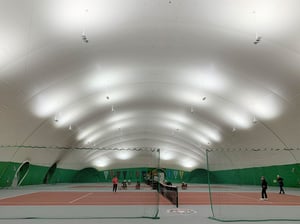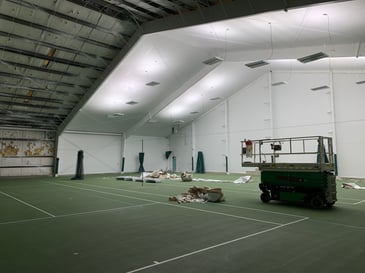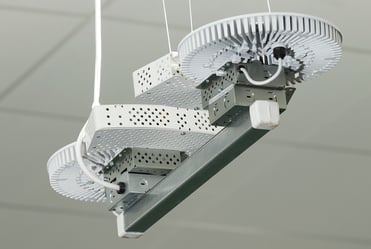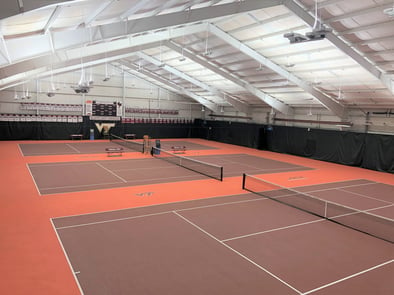Where Can I Find Information about Building a New Indoor Tennis Facility?
What resources are available if you're planning to build an indoor tennis facility?
If you are planning to build an indoor tennis facility, presumably you've already considered the general layout of the facility including:
- Location of the facility
- Layout of the tennis courts
- Number of courts
- Color(s) of the tennis courts
- Type of structure to cover the courts
More precisely, there are a number of key components which are important to understand when planning out a new indoor tennis facility.
To begin with, the type of building structure you'll be constructing is one of the first steps. The three popular options include steel-frame, fabric structure, and air structures (domes). Selection heavily depends on budget, but also location of the facility may play into the decision making process.



Secondly, it is important to understand that the ceiling area is much more than just a finishing touch to an indoor tennis building. Ceiling systems can provide significant insulation value to a building, control condensation, provide a vapor barrier which keeps courts dry, improve the lighting of the court area, as well as to enhance the overall indoor appearance. Effective ceiling systems include a highly reflective white material durable to take direct hits from tennis balls as well as an insulation.

A well designed lighting system is critical to the success of an indoor tennis building. The lighting should be designed to provide consistent, glare-free indirect illumination. The light fixtures should be designed specifically for indoor tennis, meaning high-output yet as efficient as possible. Good lighting design should take into account the shape and reflectivity of the ceiling, number of fixtures, and the reflectivity of the other building surfaces such as the walls, backdrops, and court surface.

Planning a new indoor tennis building should include heating and air conditioning (depending on the location of the facility). In terms of design, heating and cooling systems in tennis buildings should be low profile in appearance with low noise levels. Gas fired infrared heating systems are the most efficient systems available for indoor tennis. They are compact and operate without noise. Located along the ends of courts, they can effectively heat the building without the need for blowers or fans.

The tennis playing surface is one of the most important elements in the building. Deciding on what surface you will have can also impact numerous other decisions about the facility. Repairs to cracked asphalt courts typically require access for heavy machinery. Installing a fast-dry court requires special considerations in the design of the building insulation, HVAC system and structural steel footing connections to avoid costly moisture and condensation damage in the future. Accurately determining the projected light levels in the building requires knowledge of the type and color of the proposed surface. Surface color variations can effect light reflectivity by as much as 10%, significantly impacting the amount of available light for play.

Understanding the true key to success for creating a state-of- the-art indoor tennis facility requires the following:
-
knowing how to create the ideal tennis playing environment
-
knowing what to look for in the early stages of planning
-
understanding what the priorities should be
- making informed decisions about the proper building materials and methods of construction
Sports Interiors has the experience to help ensure your indoor tennis facility project meets your expectations. Contact us below to discuss your project and how we can help.
![Sports_Interiors_Logo_Design-2.png]](https://knowledgebase.sportsinteriors.com/hs-fs/hubfs/Sports_Interiors_Logo_Design-2.png?height=50&name=Sports_Interiors_Logo_Design-2.png)
